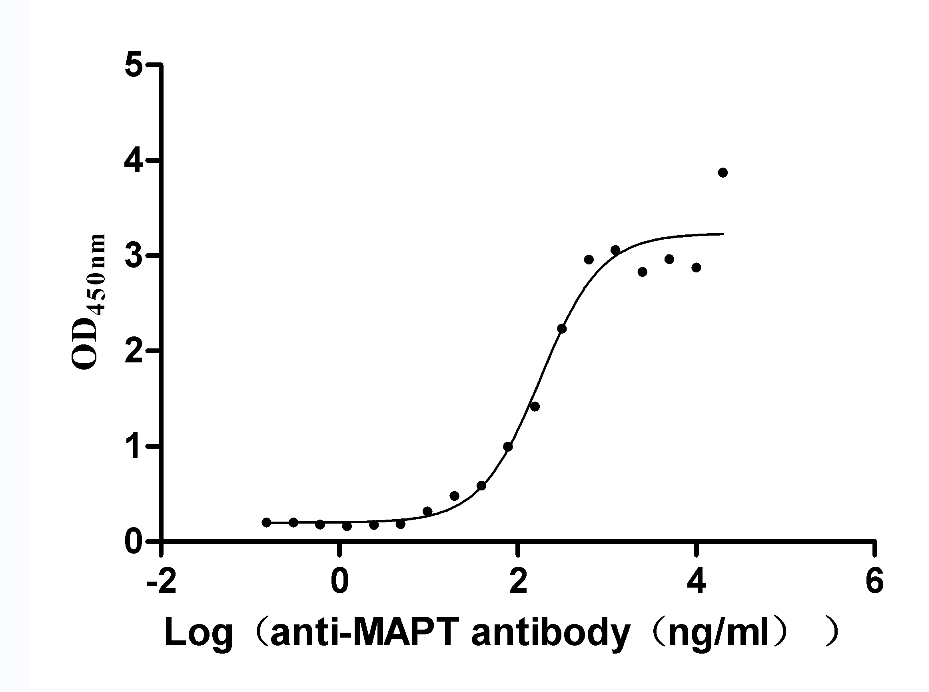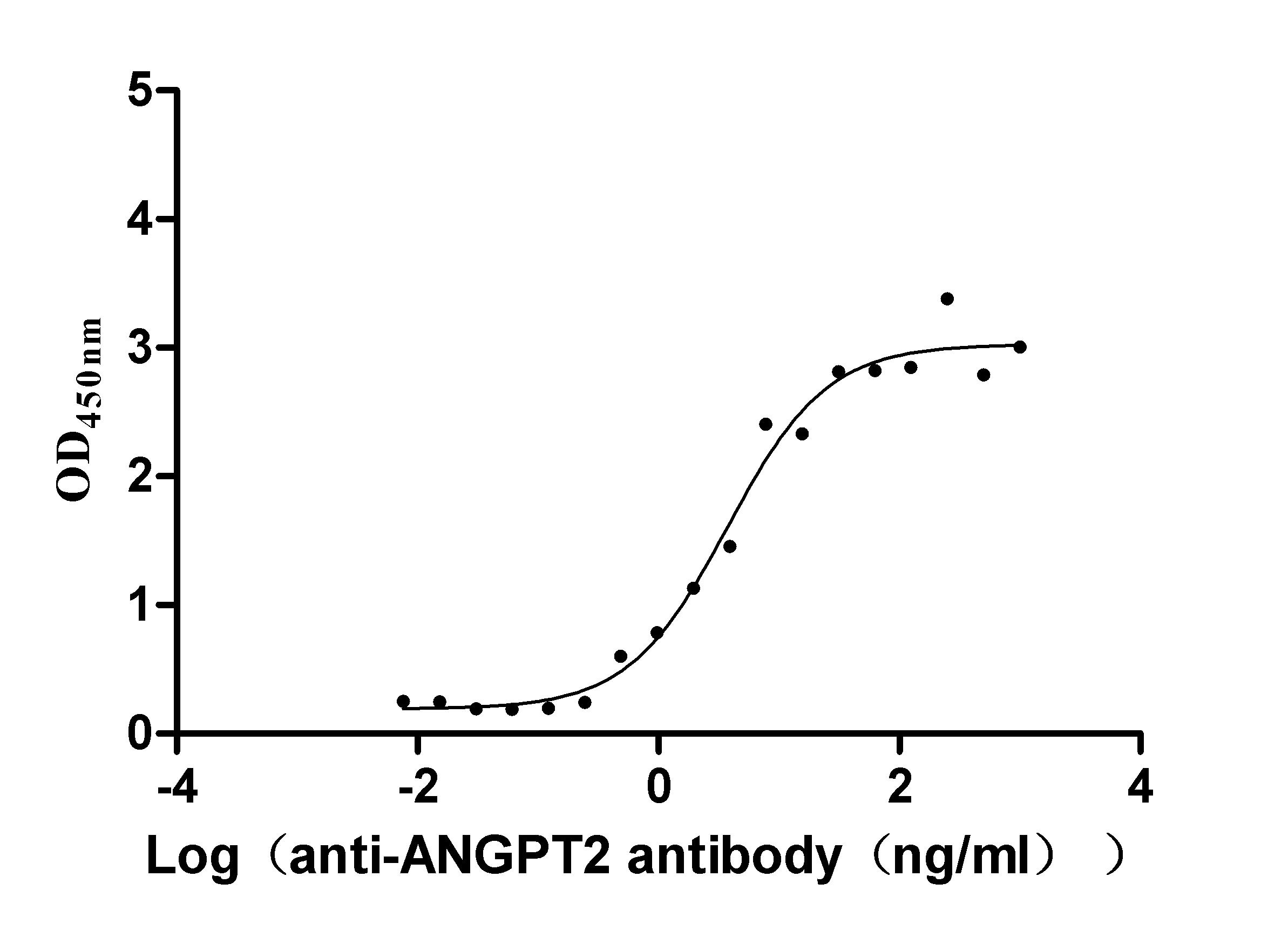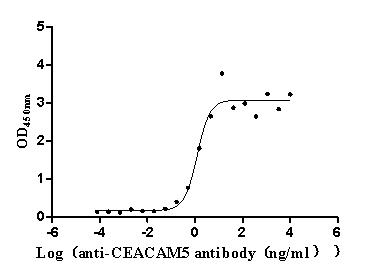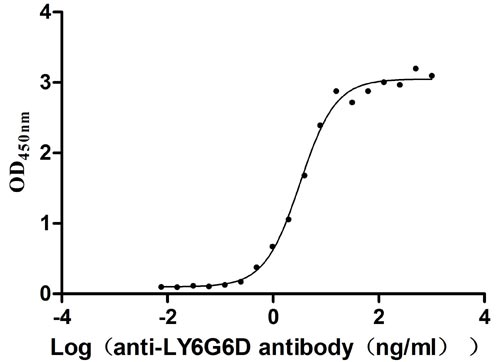Recombinant Human Amphiregulin protein (AREG), partial (Active)
In Stock-
中文名稱:Recombinant Human Amphiregulin protein(AREG) (Active)
-
品名簡稱:Recombinant Human AREG protein, partial (Active)
-
貨號:CSB-AP002641HU
-
說明書:
-
規格:¥852
-
圖片:
-
其他:
產品詳情
-
純度:>95% as determined by SDS-PAGE.
-
內毒素:Less than 1.0 EU/μg as determined by LAL method.
-
生物活性:Fully biologically active when compared to standard. The ED50 as determined by a cell proliferation assay using murine Balb/c 3T3 cells is between 5-10 ng/ml.
-
基因名:
-
Uniprot No.:
-
別名:AREG; AREGB; SDGF; Amphiregulin; AR; Colorectum cell-derived growth factor; CRDGF
-
種屬:Homo sapiens (Human)
-
蛋白長度:Partial
-
來源:E.Coli
-
分子量:11.3 kDa
-
表達區域:101-198aa
-
氨基酸序列SVRVEQVVKP PQNKTESENT SDKPKRKKKG GKNGKNRRNR KKKNPCNAEF QNFCIHGECK YIEHLEAVTC KCQQEYFGER CGEKSMKTHS MIDSSLSK
-
蛋白標簽:Tag-Free
-
產品提供形式:Liquid or Lyophilized powder
-
緩沖液:0.2 μm filtered PBS, pH 7.4 ,lyophilized
-
儲存條件:Store at -20°C/-80°C upon receipt, aliquoting is necessary for mutiple use. Avoid repeated freeze-thaw cycles.
-
保質期:The shelf life is related to many factors, storage state, buffer ingredients, storage temperature and the stability of the protein itself.
Generally, the shelf life of liquid form is 6 months at -20°C/-80°C. The shelf life of lyophilized form is 12 months at -20°C/-80°C. -
貨期:5-10 business days
-
Datasheet & COA:Please contact us to get it.
相關產品
靶點詳情
-
功能:Ligand of the EGF receptor/EGFR. Autocrine growth factor as well as a mitogen for a broad range of target cells including astrocytes, Schwann cells and fibroblasts.
-
基因功能參考文獻:
- Amphiregulin contained in non-small-cell lung carcinoma-derived exosomes induces osteoclast differentiation through the activation of EGFR pathway. PMID: 28600504
- The studies indicate that HIF2-alpha induces myocardial AREG expression in cardiac myocytes, which increases myocardial ischemia tolerance. PMID: 29483579
- AREG mediates hCG-induced StAR expression and progesterone production in human granulosa cells, providing novel evidence for the role of AREG in the regulation of steroidogenesis. PMID: 27113901
- Regulatory T-cell-intrinsic amphiregulin is dispensable for suppressive function. PMID: 27040371
- No significant correlations emerged for YAP or AREG expression and VIII CN schwannoma volume. PMID: 28430338
- Cullin 3 regulates ADAM17-mediated ectodomain shedding of AREG. PMID: 29550478
- over-expression of AREG could serve as a novel GC biomarker, and active surveillance of its expression could be a novel approach to GC diagnosis and monitoring. PMID: 27713123
- Sprouty2 inhibits amphiregulin-induced down-regulation of E-cadherin and cell invasion in human ovarian cancer cells. PMID: 27835572
- Results show that AREG expression is up-regulated in gastric tumor and its co-expression with TROP2 protein is associated with TNM stage, tumor size, lymph node metastases, and distant metastases. PMID: 28256068
- secretion of IL-13 and amphiregulin suggests Intrahepatic Innate lymphoid cells may be recruited to promote resolution and repair and thereby they may contribute to ongoing fibrogenesis in liver disease. PMID: 29261670
- EGF-AREG interplay in airway basal cell stem/progenitor cells is one of the mechanisms that mediates the interconnected pathogenesis of all major smoking-induced lesions in the human airway epithelium. PMID: 27709733
- AREG expression may be useful for identifying CRTC1-MAML2-positive mucoepidermoid carcinomas and as a marker for favorable prognosis. PMID: 27393417
- Amphiregulin enhances VEGF-A production in human chondrosarcoma cells and promotes angiogenesis by inhibiting miR-206 via FAK/c-Src/PKCdelta pathway. PMID: 27826039
- Amphiregulin plays an important role in lung neoplasm resistance to amrubicinol PMID: 28476786
- EREG and AREG are strongly regulated by methylation, and their expression is associated with CIMP status and primary tumour site. PMID: 27272216
- These findings demonstrate the posttranslational regulation of Foxp3 expression by AREG in cancer patients through AREG/EGFR/GSK-3beta signaling, which could lead to Foxp3 protein degradation in Treg cells and a potential therapeutic target for cancer treatment. PMID: 27432879
- blocking soluble amphiregulin with a neutralizing antibody also significantly increased apoptotic cell death of HepG2 cells due to treatment with methyl methanesulfonate, cisplatin, or a recombinant p53 adenovirus, suggesting that the function of amphiregulin involved in inhibiting apoptosis may be a common mechanism by which hepatoma cells escape from stimulus-induced apoptosis PMID: 28351301
- keratinocyte expression of hAREG elicits inflammatory epidermal hyperplasia PMID: 26519132
- Low AREG expression is associated with gastric cancer. PMID: 26884344
- RYR2, PTDSS1 and AREG are autism susceptibility genes that are implicated in a Lebanese population-based study of copy number variations in this disease. PMID: 26742492
- High Amphiregulin enhances intercellular adhesion molecule-1 expression and promotes tumor metastasis in osteosarcoma. PMID: 26503469
- results demonstrate that AREG controls G2/M progression and cytokinesis in keratinocytes via activation of a FoxM1-dependent transcriptional program, suggesting new avenues for treatment of epithelial cancer PMID: 26234682
- High expression of amphiregulin is associated with hepatocellular carcinoma. PMID: 26451607
- Findings show the involvement of amphiregulin and semaphorin-3A in the improvement of skin innervations and penetration of nerve fibers into the epidermis. PMID: 26201903
- Altered AREG expression induced by diverse luteinizing hormone receptor reactivity in granulosa cells may provide a useful marker for oocyte developmental competency PMID: 25911599
- Amphiregulin enhances alpha6beta1 integrin expression and cell motility in human chondrosarcoma cells through Ras/Raf/MEK/ERK/AP-1 pathway. PMID: 25825984
- Our findings implicate amphiregulin as a critical mediator of the estrogen response in ERalpha-positive breast cancer PMID: 26527289
- AR induces hHSC fibrogenic activity via multiple mitogenic signaling pathways, and is upregulated in murine and human NASH, suggesting that AR antagonists may be clinically useful anti-fibrotics in NAFLD. PMID: 25744849
- Bradykinin (BK) stimulation of human airway smooth muscle cell increases amphiregulin secretion in a mechanism dependent on BK-induced COX-2 expression. PMID: 26047642
- The applied drugs showed remarkable suppression of mTOR expression, which might delay tumor progression. Interestingly, sorafenib and sunitinib increased AREG in HNSCC 11A and 14C PMID: 25862847
- Expression profiling demonstrated that AREG-activated EGFR regulates gene expression differently than EGF-activated EGFR PMID: 25454348
- This study shows that TGF-alpha uses common and divergent molecular mediators to regulate E-cadherin expression and cell invasion. PMID: 25869072
- AREG rs1615111, located in the AREG genomic region, can significantly define different prognostic cohorts in locally advanced GC PMID: 25203737
- AREG induces ovarian cancer cell invasion by down-regulating E-cadherin expression PMID: 25261255
- During high-pressure ventilation, Nrf2 becomes activated and induces AREG, leading to a positive feedback loop between Nrf2 and AREG, which involves the p38 MAPK and results in the expression of cytoprotective genes. PMID: 24921206
- AREG expression was significantly correlated with Edmondson stage and serum AFP level. PMID: 24860833
- AREG shedding occurs through a TNF-alpha-converting enzyme-dependent mechanism in diacetyl treated pulmonary epithelial cells. PMID: 24816162
- aberrantly activated AREG-EGFR signaling is required for CRTC1-MAML2-positive MEC cell growth and survival, suggesting that EGFR-targeted therapies will benefit patients with advanced, unresectable CRTC1-MAML2-positive MEC. PMID: 23975434
- Self-reinforcing loop of amphiregulin and Y-box binding protein-1 contributes to poor outcomes in ovarian cancer. PMID: 23851501
- IL-1beta-induced amphiregulin release may be involved in the pathogenesis of rheumatoid arthritis. PMID: 24196392
- These findings provide mechanistic insight into the regulation of YAP and AREG by RASSF1A in human multistep hepatocarcinogenesis. PMID: 23594797
- Data suggest that AREG (amphiregulin), BTC (betacellulin), and EREG (epiregulin) induced prostaglandin E2 production by induction of COX-2 (prostaglandin-endoperoxide synthase 2) through MAP kinase signaling in granulosa cells. PMID: 24092824
- Exosome-bound WD repeat protein Monad inhibits breast cancer cell invasion by degrading amphiregulin mRNA. PMID: 23844004
- Promoter methylation of AREG is associated with glioblastoma. PMID: 23624749
- AREG plays pro-neoplastic roles in colorectal carcinogenesis PMID: 23263765
- EREG-AREG and NRG1, which are members of the epidermal growth factor (EGF) family, seem to modulate Behcet's disease susceptibility through main effects and gene-gene interactions PMID: 23625463
- we did not find a correlation between the presence of a K-ras mutation and the presence of Epiregulin and Amphiregulin in colon cancer tissue. PMID: 23885463
- Regulation of amphiregulin gene expression by beta-catenin signaling in human hepatocellular carcinoma cells. PMID: 23285165
- Human antigen R-mediated mRNA stabilization is required for ultraviolet B-induced autoinduction of amphiregulin in keratinocytes. PMID: 23430747
- Polycystin-1 regulates amphiregulin expression through CREB and AP1 signalling, which has implications in ADPKD cell proliferation PMID: 22570239
顯示更多
收起更多
-
亞細胞定位:Membrane; Single-pass membrane protein.
-
蛋白家族:Amphiregulin family
-
數據庫鏈接:
Most popular with customers
-
Recombinant Human UL16-binding protein 1 (ULBP1) (Active)
Express system: Mammalian cell
Species: Homo sapiens (Human)
-
Recombinant Human Receptor tyrosine-protein kinase erbB-3 (ERBB3), partial (Active)
Express system: Mammalian cell
Species: Homo sapiens (Human)
-
Recombinant Human Poliovirus receptor (PVR) (I340M), partial (Active)
Express system: Mammalian cell
Species: Homo sapiens (Human)
-
Recombinant Human T-cell surface protein tactile (CD96), partial (Active)
Express system: Mammalian cell
Species: Homo sapiens (Human)
-
Recombinant Rat Microtubule-associated protein tau (Mapt) (Active)
Express system: Mammalian cell
Species: Rattus norvegicus (Rat)
-
Recombinant Dog Angiopoietin-2 (ANGPT2) (Active)
Express system: Mammalian cell
Species: Canis lupus familiaris (Dog) (Canis familiaris)
-
Express system: Mammalian cell
Species: Homo sapiens (Human)
-
Recombinant Human Lymphocyte antigen 6 complex locus protein G6d (LY6G6D) (Active)
Express system: Yeast
Species: Homo sapiens (Human)



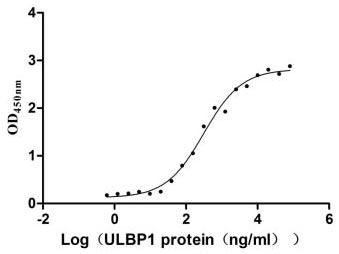

-AC1.jpg)
-AC1.jpg)
